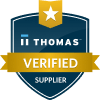Water treatment is an essential but often complicated process. Water must be able to move smoothly through the filtration system to ensure productivity and reduce downtime and costly repairs. Pure water will run smoothly, but water that contains dirt, surfactants, metabolic waste, organisms, and other impurities will foam when air or another gas is introduced. To avoid foam accumulation and backup while treating water for those impurities, the right foam control solutions must be used in the proper amounts. Choosing your chemical foam control solution is a science: the one you need will depend upon what types of impurities are present in your water and the anticipated use of the treated water.
Chemical Foam Control Solutions For Water Treatment Applications
Foam accumulation during the industrial water treatment process can cause a lot of problems, including potability and quality issues, container overflow, blockages, pump cavitation, slippery surfaces, and obstructed views. It’s essential to control foam production and accumulation to keep the equipment running smoothly, enhance worker safety, and ensure the quality of processed water. To that end, water treatment facilities rely on defoamers and antifoams. In our latest eBook, we discuss a variety of foam control products and their applications in water and wastewater treatment.
Industry Spotlight: Water Treatment
Foaming is a major concern in the water treatment industry, but there are a variety of standard and custom defoamer and antifoam solutions to help you manage it. Defoamers control foam as it develops, while antifoam prevents it from developing in the first place. Each type of product has its advantages in specific applications, including:
- Aeration basins
- Water equalization tanks
- Boiler water treatment
- Secondary water treatment systems
- Membrane systems
- Evaporative water treatment systems
- Manure pits
- Cooling towers
- Moving bed biofilm reactors (MBBRs)
- And more
There are various types of defoamers and antifoams, and the one you choose requires careful consideration of your system and its filtration membranes, microorganisms, and other chemistry. You may choose an oil-based or a water-based option, with or without silicone, in powdered or solid form. There is a solution for every system, even in the most specific or unusual conditions, whether your foaming issue is because of biological macromolecules from microbial metabolism, surfactant contamination, or anything else.
Antifoam Agents for Water Treatment
Our infographic lists some possible application points for antifoams within a treatment plant, including membrane bioreactors (MBRs), clarifiers, and sequencing batch reactors (SBRs), and elaborates on two broad antifoam categories:
- Silicone Antifoam: These contain hydrophobic silicone polymers and inorganic silicates, and they’re available in a range of concentrations, from ready-to-use options to super-concentrated versions that require on-site dilution.
- Non-Silicone Antifoam: The antifoams in this broad category might include refined oils, wax, organic esters, silicates, and more, in combination or alone.
Foam Treatment Solutions at AMS
Applied Material Solutions (AMS) develops and manufactures a wide range of antifoams and defoamers for water and wastewater treatment systems, along with secondary services like field support, private labeling, drop shipping, toll manufacturing, and custom formulation. Our silicone antifoams include AE-10-TG, AFC-2, TRANS-278 D, and TRANS-2910B, while non-silicone options include TRANS-1553, TRANS-220 D, and TRANS-245, among others, representing the entire suite of foam control chemistries for water treatment applications. They can be purchased in containers as small as five-gallon buckets and as large as bulk tank wagons.
Our headquarters and world-class manufacturing facilities are in Wisconsin. Through the years, we’ve worked with clients all over the country to help them keep their water treatment systems running smoothly and safely. Our team is highly trained and experienced, and we’re committed to providing high-quality solutions at competitive prices. Contact us to learn more about our many defoamers and antifoam solutions, including custom formulations designed for your unique application, and download our latest eBook, Chemical Foam Control Solutions for Water Treatment Applications.



Comments are closed